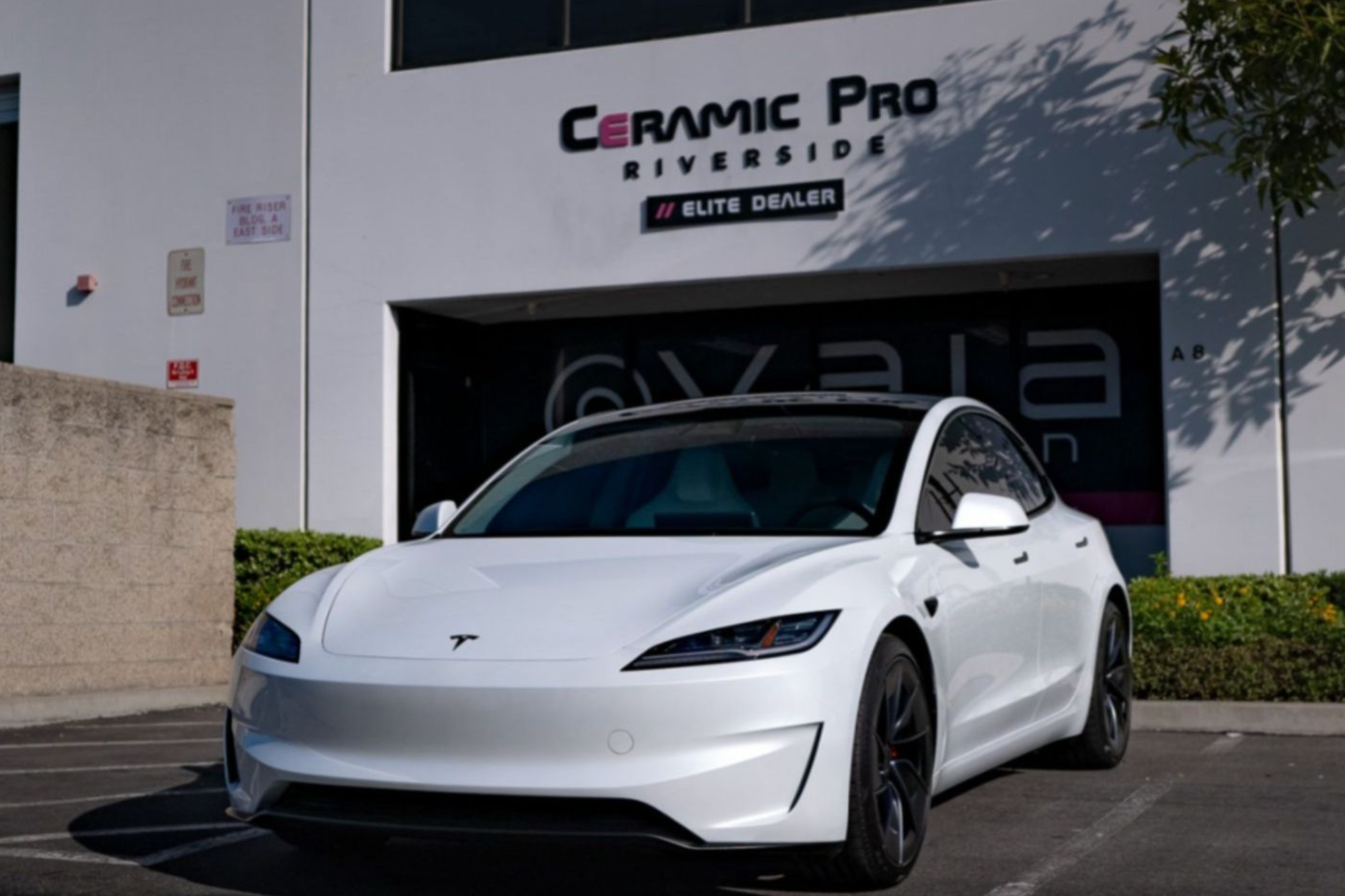It is essential to know how to maximize their lifespan with ceramic coatings lasting anywhere from 2 to 5 years. Understanding the intricate balance between maintenance practices, environmental factors, and initial application quality can markedly impact the durability of your coating. But what are the key factors that can make or break the longevity of this protective layer? Let’s explore the nuances that could determine whether your ceramic coating stands the test of time or falls short of expectations.
Key Takeaways
- Quality coating and maintenance can extend lifespan.
- Proper surface prep before application is crucial.
- Environmental factors influence coating durability.
- Regular maintenance preserves and enhances coating.
- Professional application ensures longevity and effectiveness.
Benefits of Ceramic Coating
What are the benefits of ceramic coating for your vehicle? Ceramic coating offers exceptional protection for your vehicle’s paintwork, ensuring longevity and a pristine appearance. In Riverside, CA, ceramic coating is highly recommended for its durability and effectiveness in maintaining your car’s aesthetics.
When considering how long ceramic coating lasts, it’s vital to understand its advantages.
Ceramic coating protects against various external factors, such as UV rays, oxidation, dirt, and chemical stains. It forms a transparent layer over the paint surface to prevent these elements from causing damage, ultimately preserving the quality of your vehicle’s exterior.
This protection is essential for maintaining your car’s resale value and ensuring it looks suitable for an extended period.
Furthermore, the ceramic coating makes cleaning your vehicle a breeze. The coating’s hydrophobic properties repel water and dirt, making it easier to wash off contaminants without harsh chemicals or vigorous scrubbing.
This saves time and effort and reduces the risk of scratches and swirl marks on your paintwork.
Factors Affecting Longevity
Understanding the key factors influencing the longevity of ceramic coating on your vehicle is vital to maximizing its lifespan. Several factors are essential in determining how long ceramic coating will last on your car.
The quality of the coating itself is a significant factor. High-quality ceramic coatings with advanced formulations and higher solid content tend to last longer than lower-quality alternatives.
Another vital factor affecting the longevity of ceramic coating is the preparation of the vehicle’s surface before application. Properly cleaning and preparing the surface ensures better layer adhesion and a longer lifespan.
Environmental factors such as exposure to sunlight, UV rays, and harsh weather conditions can also impact the durability of the coating. Parking your vehicle in a garage or shaded area can help prolong the lifespan of the ceramic coating by reducing exposure to these elements.
Furthermore, how you maintain your vehicle after applying ceramic coating can significantly affect its longevity. Regularly washing your car with pH-neutral soaps and avoiding abrasive cleaning will help preserve the coating.
Proper Maintenance Tips
For the ideal upkeep of your ceramic coating, implementing proper maintenance routines is pivotal to prolonging its lifespan.
Regular washing is essential to maintaining the pristine condition of your ceramic coating. Dirt, grime, and contaminants can degrade the coating over time, so washing your vehicle every two weeks with a pH-neutral car wash soap will help preserve the coating. A high-quality microfiber wash mitt and drying towel will also prevent scratching and swirl marks that can compromise the coating.
In addition to regular washing, avoiding harsh chemicals and detergents is vital for the longevity of your ceramic coating. Chemicals like bleach or harsh cleaners can strip the protective layer, reducing effectiveness. Opt for gentle cleaning products formulated for ceramic coatings to ensure peak protection.
Furthermore, applying a ceramic coating booster every 3-6 months can revitalize the coating, enhancing its hydrophobic properties and durability. These boosters help maintain the water-beading effect and provide extra protection against environmental contaminants.
Lastly, avoiding automatic car washes with brushes is recommended, as these abrasive materials can scratch and damage the ceramic coating. Opt for hand washing or touchless car washes to prevent any potential harm to the coating.
Professional Application Importance
Maximizing the lifespan of your ceramic coating hinges considerably on the initial application process. Opting for professional application services is paramount in ensuring its longevity and effectiveness.
Professionals possess the necessary expertise and tools to apply the coating evenly and correctly, avoiding common pitfalls that can arise from DIY applications.
Professional application of ceramic coating involves a meticulous process that starts with thorough surface preparation. This step includes decontaminating the surface, removing existing coatings, and correcting imperfections to ensure a smooth foundation for the ceramic coating.
Additionally, professionals are trained to apply the coating at the ideal thickness, ensuring maximum protection without the risk of overapplication, which can lead to issues later.
Moreover, professionals can access high-quality ceramic coating products that may need to be more readily available to consumers. These premium products often offer enhanced durability and performance, further extending the lifespan of your ceramic coating.
Signs of Deterioration
As your ceramic coating ages, look for specific deterioration indicators that signal a need for maintenance.
Understanding these signs and regularly evaluating the longevity of your coating can help you take proactive measures to extend its lifespan.
Deterioration Indicators
When it comes to ceramic coating lifespan, identifying the deterioration indicators is crucial for maintaining its effectiveness.
Keep an eye out for the following signs that may indicate your ceramic coating is deteriorating:
- Loss of Hydrophobic Properties: If you notice that water is no longer beading up on the surface but instead forming sheets, it could be a sign that the coating’s hydrophobic properties are diminishing.
- Appearance of Swirl Marks and Minor Scratches: Swirl marks and minor scratches that are more visible than before might indicate that the ceramic coating is wearing off and no longer providing the same level of protection.
- Fading of Gloss: A decrease in the gloss and shine of your vehicle’s surface could signal that the ceramic coating is degrading and losing its protective qualities.
Identifying these deterioration indicators promptly can help you take the necessary steps to maintain your ceramic coating and ensure its longevity.
Longevity Assessment
To evaluate the ceramic coating’s longevity thoroughly, it’s imperative to recognize the subtle signs of deterioration that can compromise its protective capabilities.
One key indication to watch for is a decrease in hydrophobicity. Ceramic coatings are designed to repel water and contaminants, and a loss in this property suggests a decline in the coating’s effectiveness.
Additionally, an increase in surface roughness can signal wear and tear on the coating, reducing its ability to shield the underlying surface.
Another telltale sign of deterioration is a decrease in gloss and shine. Ceramic coatings are known for enhancing the appearance of surfaces, so any fading in these aesthetic traits may indicate a weakening of the coating.
Finally, if the coating shows visible staining or etching, it could indicate a breakdown in its protective layer.
Monitoring these signs regularly can help you assess the longevity of your ceramic coating and take appropriate maintenance measures to prolong its lifespan.
DIY Vs. Professional Application
When considering DIY versus professional application of ceramic coatings, it’s essential to weigh the trade-offs in results, cost, and quality.
While DIY kits may offer initial cost savings, a professional application often ensures a higher-quality finish and longer-lasting protection.
The longevity and maintenance of the coating can considerably differ based on the application method chosen.
DIY Vs. Pro Results
Opting for either a do-it-yourself (DIY) ceramic coating application or enlisting a professional service can significantly impact the durability and effectiveness of the protective layer on your vehicle’s surface.
When considering DIY versus professional results:
- DIY Application:
- Requires meticulous surface preparation to ensure proper adhesion.
- There may be uneven coverage, leading to potential weak spots.
- The skill level and experience can considerably influence the outcome.
- Professional Application:
- Utilizes advanced tools and techniques for a more uniform coating.
- Professionals often have access to higher-quality ceramic coatings.
- Offers a warranty for workmanship and durability.
Choosing the right approach is vital in maximizing the lifespan of your ceramic coating.
While DIY can be cost-effective, professional applications generally yield more consistent and enduring results.
Ultimately, the decision hinges on your comfort level with the process and the importance you place on a flawless finish that provides peak protection for your vehicle.
Cost and Quality
Exploring the intricacies of material expenses, labor hours, and long-term outcomes is essential to gauge the cost-effectiveness and quality disparities between DIY and professional ceramic coating applications.
When considering cost, DIY kits are typically more budget-friendly upfront, ranging from $50 to $150, while professional applications can cost anywhere from $500 to $2,000, depending on the vehicle size and coating brand.
Regarding quality, professional ceramic coating installers often have access to higher-grade products and specialized equipment, ensuring a more precise and durable application than the DIY approach.
While the DIY option can be satisfying for those seeking a hands-on project, professional installers bring expertise and experience that can result in a smoother finish and longer-lasting protection.
Additionally, professional applications often have warranties that ensure the coating’s performance for a specified period.
Ultimately, the decision between DIY and professional application depends on your budget, desired outcome, and commitment to long-term protection.
Longevity and Maintenance
Moving from considering cost and quality differences between DIY and professional ceramic coating applications, it is crucial to analyze the impact on longevity and maintenance.
When comparing DIY and professional ceramic coating applications regarding longevity and maintenance, several key factors come into play:
- Skill Level: Professional application ensures higher expertise and precision, potentially leading to a longer-lasting ceramic coating.
- Product Quality: Professionals often use superior-grade ceramic coatings formulated for durability and longevity, which offer better protection against environmental factors.
- Maintenance Regimen: Professionals may provide specific instructions tailored to your coating, enhancing its lifespan through proper care and upkeep.
Considering these factors, opting for a professional application can greatly contribute to maximizing the lifespan of your ceramic coating, ensuring lasting protection and a well-maintained finish.
Realistic Lifespan Expectations
When considering the realistic lifespan expectations of ceramic coatings, it’s essential to understand the factors that can impact their longevity. Ceramic coatings are designed to provide durable protection for your vehicle’s paintwork. The lifespan of a ceramic coating can vary depending on several variables, such as the quality of the coating applied, the preparation of the surface before application, and the environmental conditions the vehicle is exposed to.
Typically, a high-quality ceramic coating can last two to five years. However, this isn’t a one-size-fits-all timeframe. The lifespan of a ceramic coating can be affected by how well it’s maintained. Regular washing and proper care can help extend the coating’s lifespan, ensuring that it continues to provide excellent protection for your vehicle’s paintwork.
Factors like exposure to harsh chemicals, abrasive cleaners, and environmental contaminants can also impact the durability of the ceramic coating. By being mindful of these factors and taking proactive steps to care for your ceramic coating, you can maximize its lifespan and keep your vehicle looking its best for years.
Understanding the realistic lifespan expectations of ceramic coatings can help you make informed decisions about caring for your vehicle and maintaining its appearance over time.
Renewal and Reapplication Process
Understanding the factors that influence the longevity of ceramic coatings naturally leads to contemplating the Renewal and Reapplication Process.
When it comes to renewing and reapplying ceramic coatings, there are several key points to take into account:
- Surface Preparation: Properly preparing the surface before reapplying the ceramic coating is essential. This includes thorough cleaning and decontamination to ensure the new coating adheres effectively.
- Product Choice: It is critical to select a high-quality ceramic coating product for renewal. Ensure the latest coating is compatible with the existing one to prevent adverse reactions or decreased performance.
- Application Technique: How you apply the renewed ceramic coating can greatly impact its effectiveness and longevity. Following the manufacturer’s guidelines regarding application methods and curing times is essential for ideal results.
Industry Standards and Recommendations
Adherence to industry standards and recommendations is essential to ensure the ideal performance and longevity of ceramic coatings.
Industry standards suggest ceramic coatings should be applied in controlled environments with proper ventilation, temperature, and humidity. Following these guidelines ensures the coating cures correctly, maximizing its durability and effectiveness.
Moreover, industry recommendations often include a preparation process before applying the ceramic coating. This involves thorough cleaning, decontamination, and polishing of the vehicle’s surface to ensure proper coating adhesion.
Adherence to these preparation steps can reduce coating lifespan and performance.
In addition, industry standards also emphasize the importance of using high-quality ceramic coating products from reputable manufacturers. Inferior products may provide a different level of protection and durability than those meeting industry standards.
Investing in premium ceramic coatings can greatly impact the longevity and effectiveness of the coating on your vehicle.
Furthermore, regular maintenance in line with industry recommendations is vital for extending the lifespan of ceramic coatings. This includes using appropriate wash methods, avoiding harsh chemicals, and periodic inspections to address any issues promptly.
Maximizing the lifespan of ceramic coating requires proper maintenance and professional application. By following recommended care practices and avoiding harsh chemicals, you can extend the durability of your coating. Remember, investing in quality application and maintenance will ensure that your coating lasts for years.
Vaia Design offers high-quality ceramic coating services, ensuring your vehicle is protected with a durable and long-lasting finish. With expert application and attention to detail, Vaia Design maximizes the lifespan of your ceramic coating, providing superior protection and maintaining your vehicle’s appearance for years to come.


